Under the shade of tall pines camellias and hostas grow lush, unscathed even in the blazing heat of August. The soil beneath the bedding of pine needles remains moist through short periods of drought, and shallow rooted shrubs and perennials grow contentedly. Unfortunately, I have no pines in my garden, only densely rooted maples and poplars that challenge the gardener to dig a hole through compacted clay and matted roots that drain every ounce of moisture.
I suppose that I shouldn’t complain. Gardeners in the arid southwest have a more difficult lot, and I cannot imagine living with the short growing season of northern climes, but my property sits astride a mature woodland with sparse undergrowth where multiflora roses and brambles struggle for survival in dry, dense shade. Gardening under the shaded canopy and at the forest’s edge is troublesome, but I have managed in a little over twenty years to assemble a decent patch of trees, shrubs, and perennials.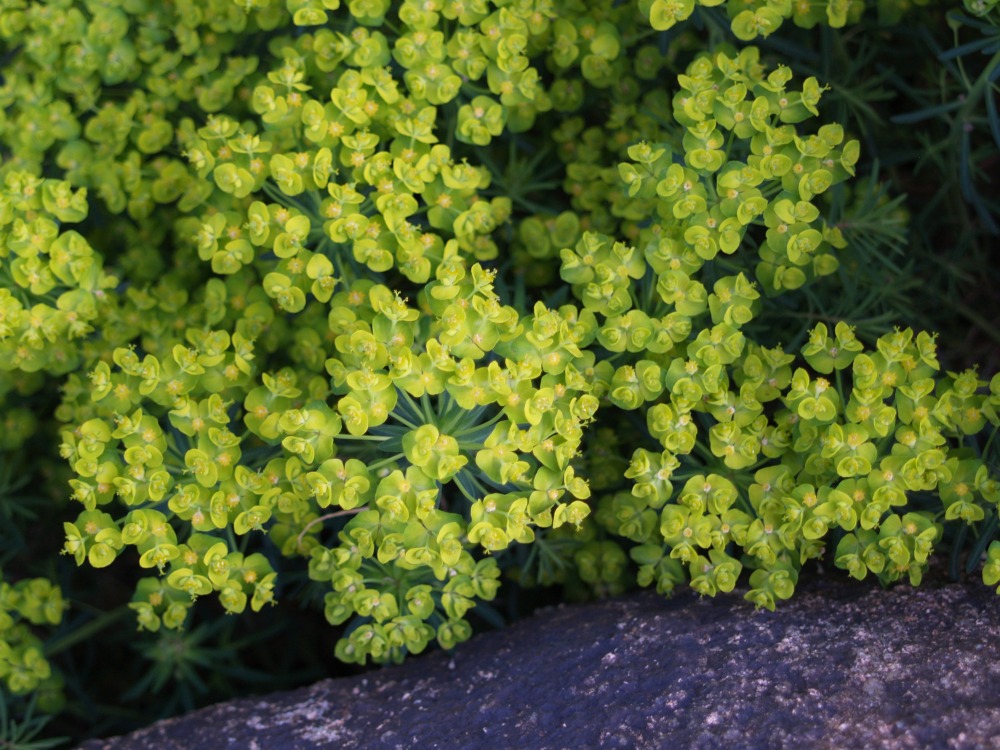
There are two problems with gardening in dry shade. First, the shade, but rarely is shade so deep and dark that plants will not survive. The more bothersome issue is root competition that robs soil of available moisture and affords little space between soil particles for roots to flourish.
The reasonable presumption for planting in such conditions is to simply add soil or compost so that new plants are planted above the horrid, root filled soil, and this will work for a time while plants are allowed to gain a foothold, but after a short period the greedy roots of maples will search upwards. Thus, the plants that we choose for dry shade must be tolerant of these conditions over the long term or they will quickly perish.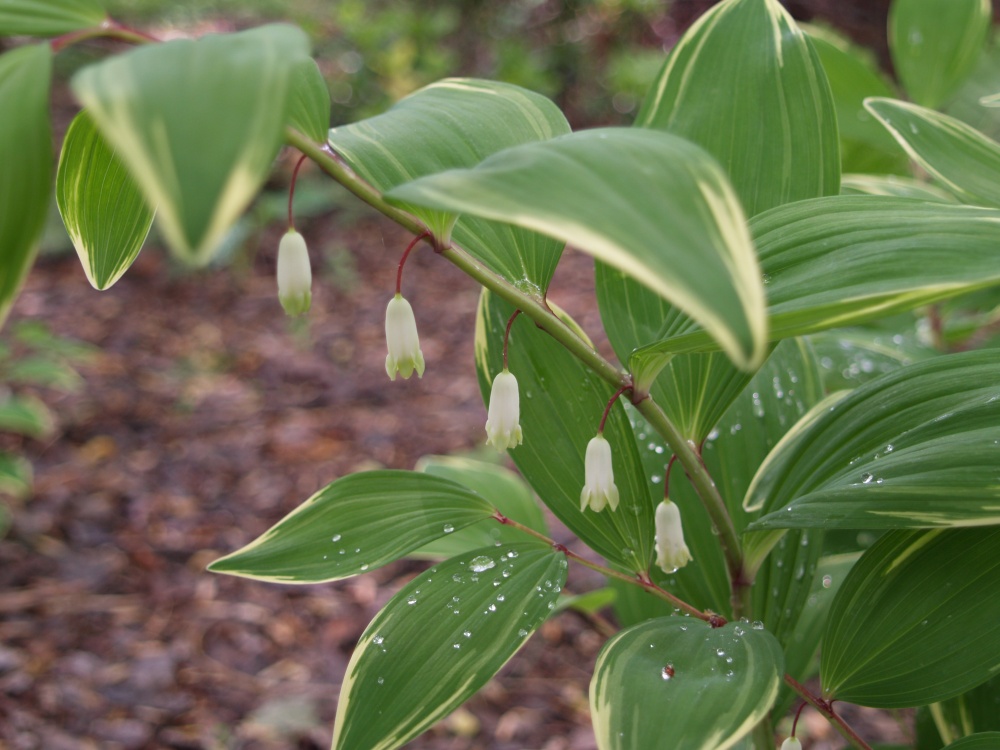
I have experienced considerable failure in my shade plantings, mostly as a result of a lack of attention to watering, and often within days of planting. I am easily distracted by this or that, and I’m likely to be lazier than the average gardener. A new plant will often be forced to survive without assistance, and if rainfall isn’t adequate there’s little chance for its survival.
Perennials and ground covers require more immediate attention to watering when planted in dry conditions, but are often more successful in dealing with shallow rooted neighbors. Shrubs and evergreens require more diligent oversight when planted in dry shade, and though I have yet to find any that thrive in this situation, there are a few that survive without too much care.
There are two mahonia varieties in the garden, the early winter blooming ‘Winter Sun’ (above), and spring flowering Mahonia beali, and both grow well in dry shaded areas, though somewhat slower than in full sun. Even in periods of prolonged drought I have seldom seen any sign of struggle, and the sharply spined evergreens are quite resistant to injury from deer.
Slow growing plum yews (Cephalotaxus harringtonia ‘Fastigiata’, below) are also deer resistant, and adapt well to dry shade. The spreading plum yew has arching, dark green, fern-like needled foliage, and the more upright types add a bit of evergreen mass that is often lacking in shade plantings.
A splash of yellow brightens the shady garden, and variegated aucubas (Aucuba japonica ‘Gold Dust’, below) are wonderful, low care evergreens, though they will wilt a bit when the ground is dry. Established plants recover quickly after irrigation or rainfall. In my garden aucubas are a favorite of deer through the winter months, but a single spraying of deer repellent late in the autumn takes care of the problem until spring.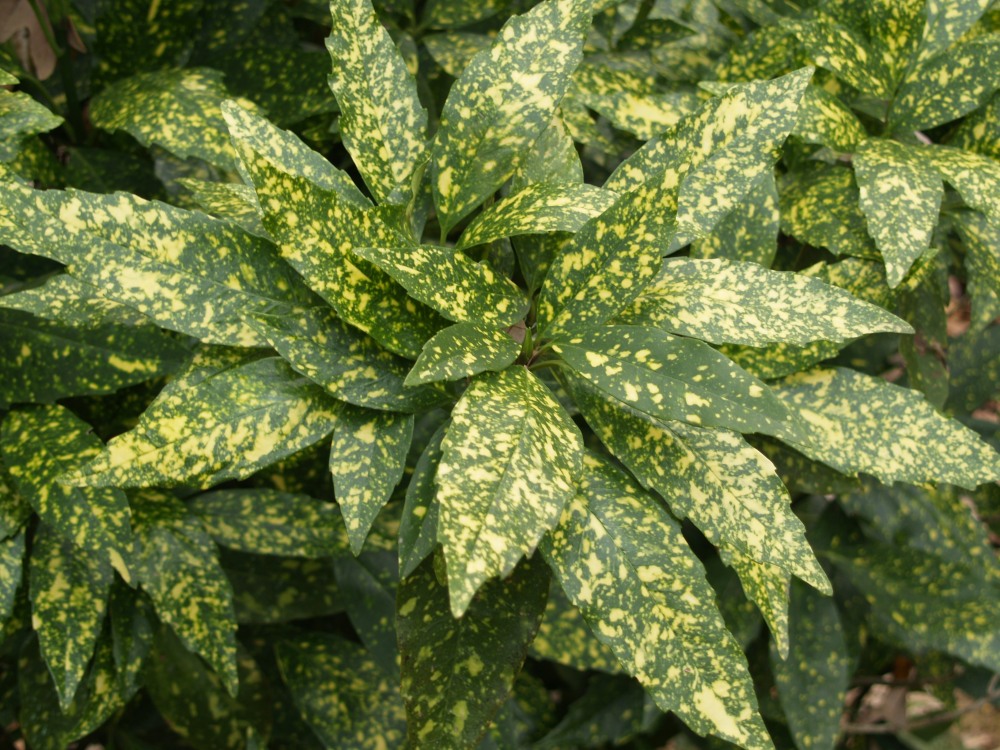
Though camellias (Camellia ‘Winter’s Joy’, below) require more attention to irrigation through the summer in the first year or two after planting, the dark glossy leaves and large blooms are a delight, and worth the bother when rainfall is lacking. The late autumn blooming hybrids flower when there is little color in the garden, though I don’t hesitate to recommend the spring bloomers. In dry shade camellias grow slowly, but reliably.
Growing under thirsty maples I have had good fortune with only a few sturdy rhododendrons, and evergreen azaleas are likely to fail quickly. I have had better results with deciduous azaleas (Exbury azalea, below), and their bright orange and yellow (often fragrant) blooms are more evident in deeper shade.
The mahonias, aucubas, plum yews, azaleas, and a few Oakleaf hydrangeas are planted where I could find sufficient space between roots of the large maples and poplars (and a lone native Black Gum) at the border of the garden. Where a bit of soil could be found between massive surface roots I have planted ferns and perennials, and though they would prefer a better circumstance they survive without care. Japanese Forest grass (Hakonechloa macra ‘Aureola’, below) has held up well in this inhospitable environment, slowly spreading its arching clump of striped gold leaves.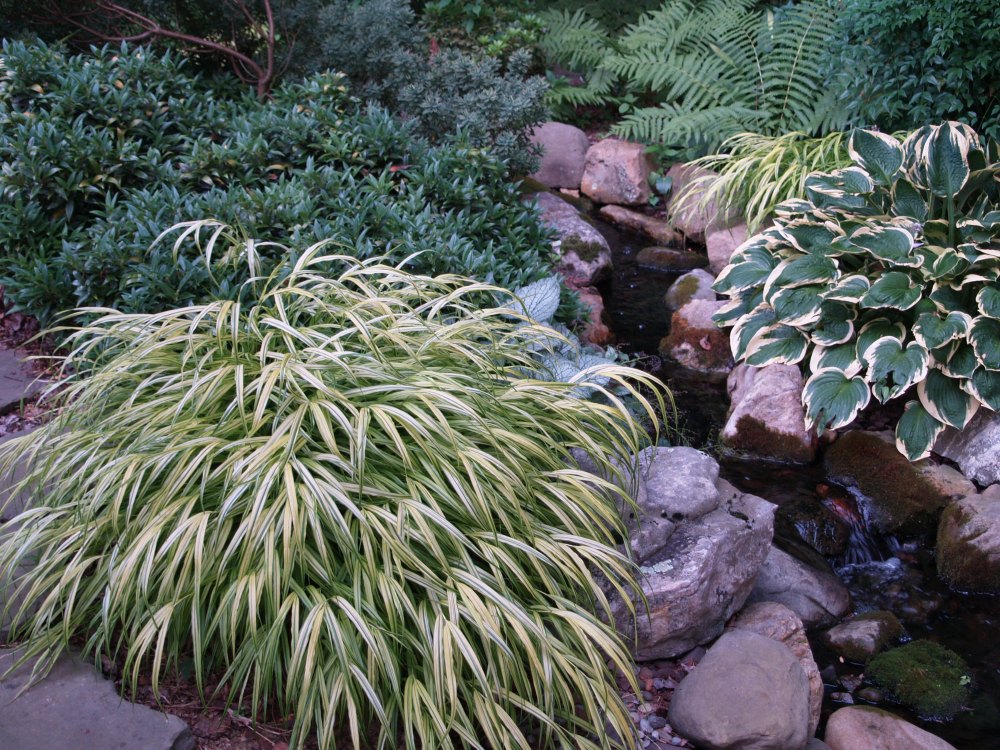
Before I established a monthly program of spraying a deer repellent there were a hundred or more varieties of hosta (below) in the garden, and now that they are protected from damage many have returned vigorously, though they grow more slowly than in deeper soils, and with smaller leaves. Yellow, blue, and variegated leaves brighten the shady garden considerably, and a few years ago, when I was resigned to giving up on them, my wife demanded a solution to our deer problem rather losing these treasures. Today, I add new hostas without hesitation.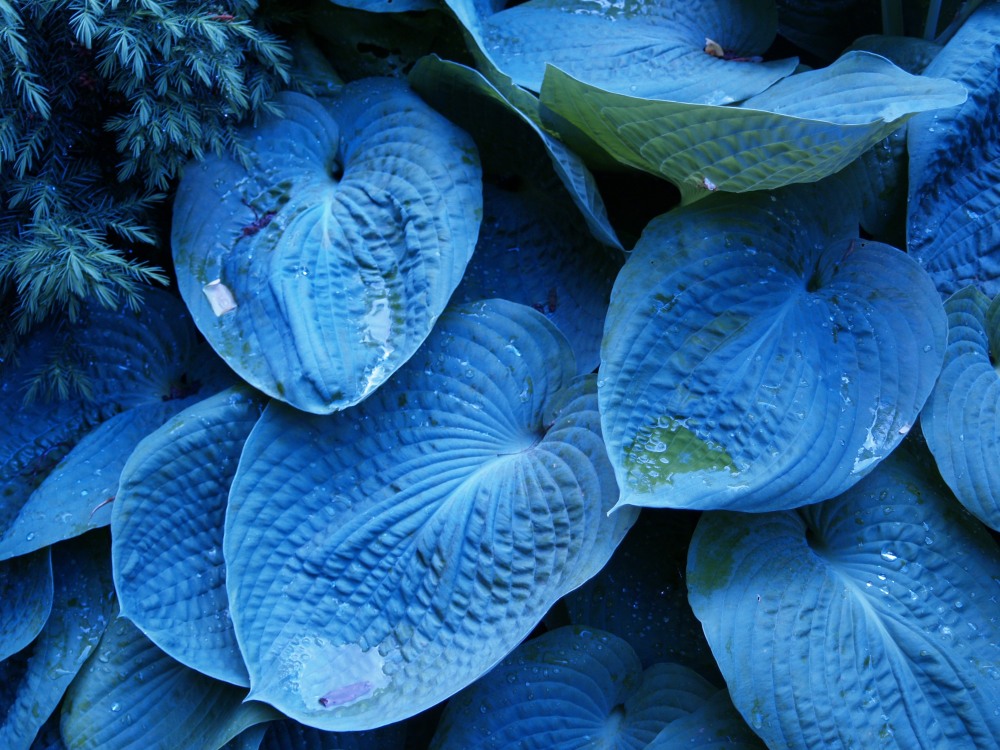
While clumps of hostas and ferns, barrenworts and liriopes expand slowly I have been pleased that Black Mondo grass (Ophiopogon planiscapus “Nigrescens’, below) creeps along, making its way along a stone path in thin, dry soil. A few sprigs that were transplanted a few years back have spread to cover an area five feet square, and the impact of the dark foliage in the shade is surprising.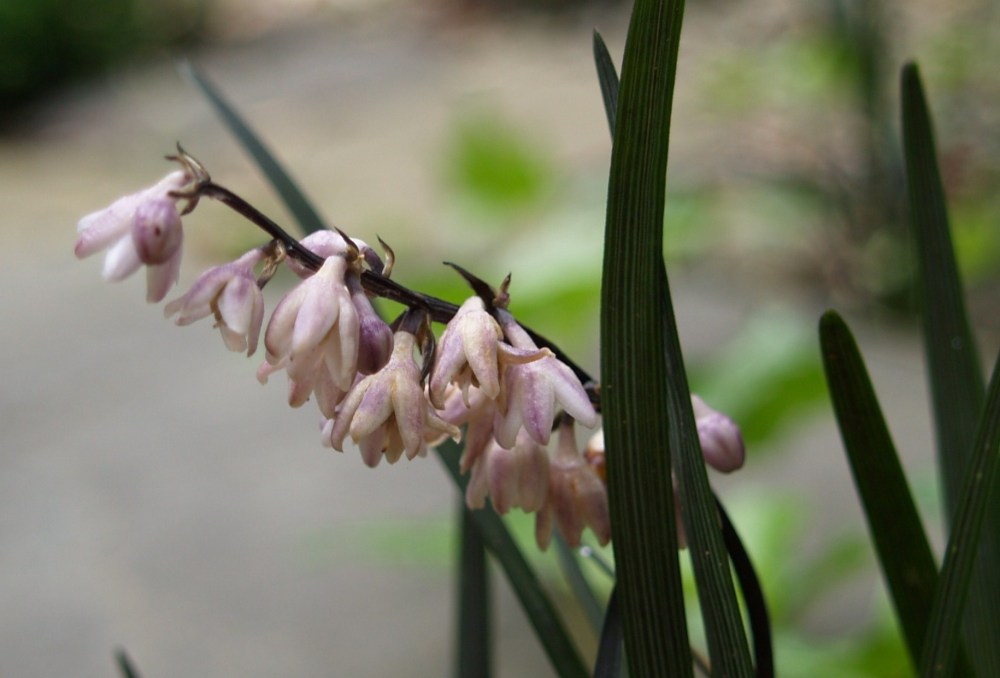
Euphorbias are most often planted in sun to part sun, but Robb’s Wood spurge (Euphorbia amygdaloides ‘Robbiae’, below) is content to grow in deep shade, spreading quickly through matted tree roots. I have transplanted a few hostas in its path that would have been overwhelmed, but its more aggressive nature is welcome in this difficult area, and the brightly colored bracts persist for months. The sap that oozes from a broken branch of euphorbia is caustic (though I have never had a problem), and because of this it is reliably deer proof.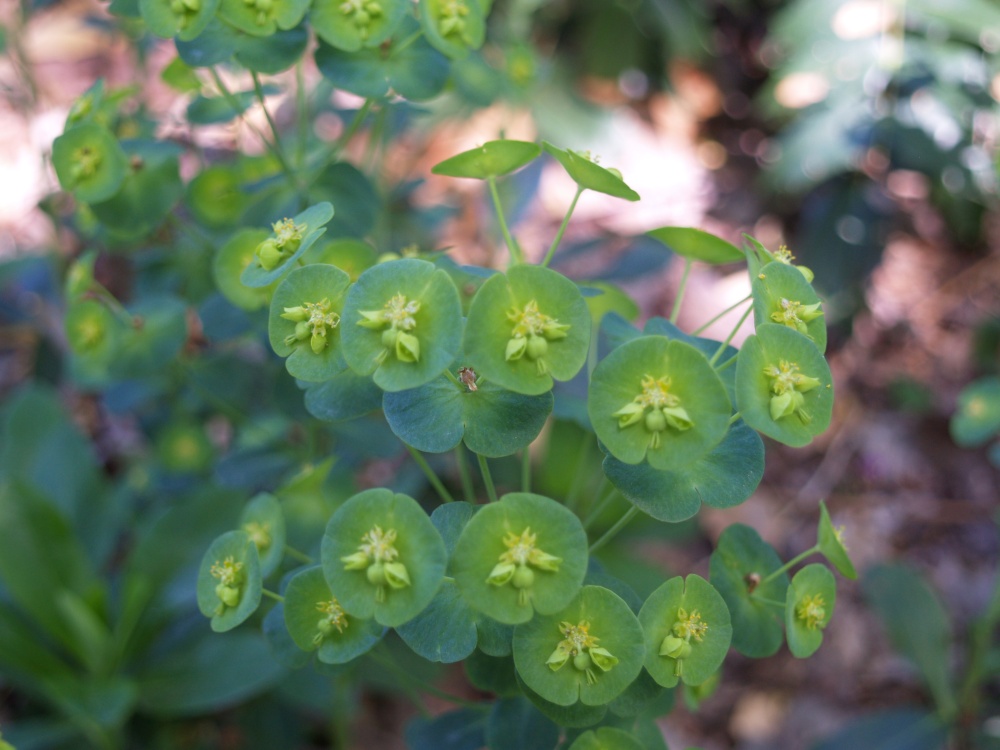
While euphorbia spreads underground, the population of hellebores (below) in the garden has increased by seedlings that pop up nearby. I happily transplant the young plants, and the eagerly anticipate the late winter blooms. Hellebores seem not to mind the shade or poor soil, and they are dependably deer resistant.
I have planted variegated ivies (Hedera, below) in a few difficult spaces in the garden, and though they are considered to be invasive, ivies will produce seed only when they have begun to climb and develop a distinct adult foliage. Green leafed types spread more quickly than the variegated sorts, and occasionally must be pruned to prevent climbing walls or trees. I have not seen the variegated ivies climb, flower, or go to seed in my garden, though I will watch closely. I have seen ivy in areas where it has escaped cultivation into the forest, and more frequently see ivy in gardens that requires frequent pruning to keep it under control, so I hesitate to mention that ivy handles dry shade easily.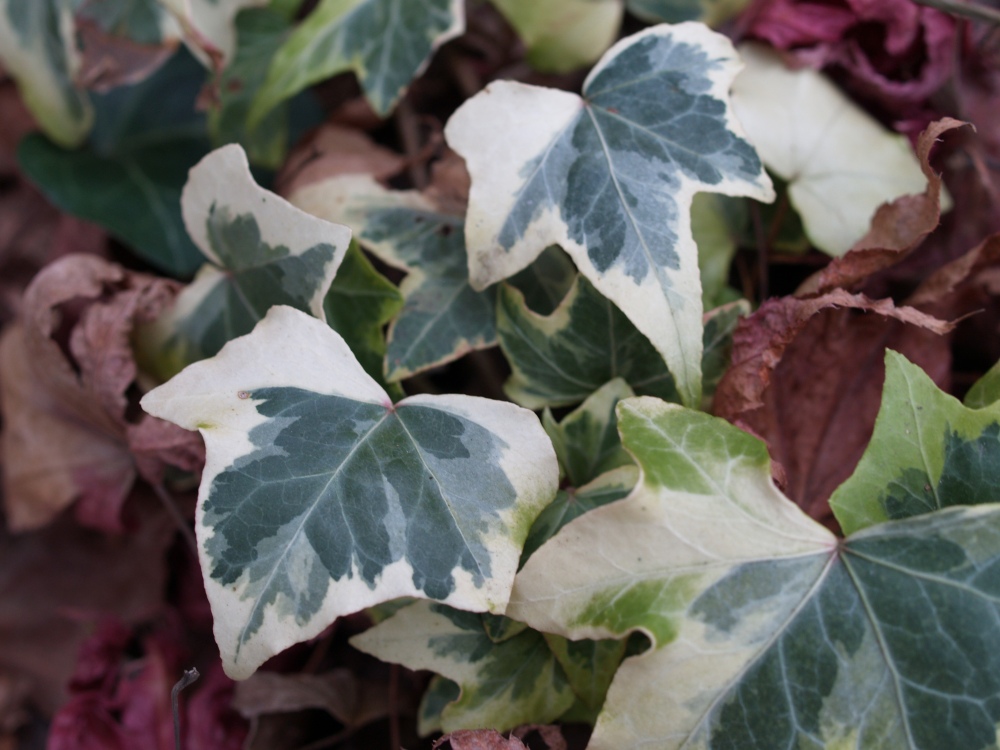
I have found that periwinkle (Vinca minor, below) is better suited to dry shade than pachysandra, and though both are quite common, the variegated vincas are a bit more interesting. In competition with shallow tree roots either will slowly spread to make a lush carpet, so that the dry shade need not be abandoned to brambles.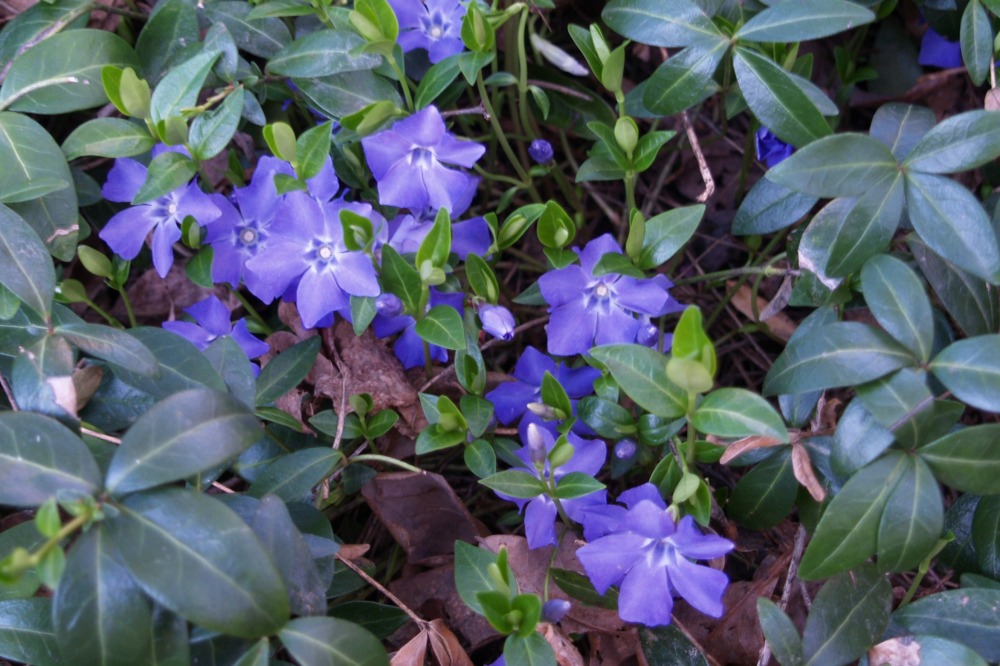
Thank you for that insight on shade plants. I just moved to a rolling/rock outcropping dry shade/ partial shade lot. I love it but there is no ground folliage under my tulip/oak and ? trees…Have planted some hostias which seem ok, some fern, some hydrangea which all seem to be holding on ok…Was thinking in ivy but maybe not! Maybe the vincla you recommened. Want to put in pathways with some rest areas….Someday a waterfeature coming down side of one rock outcropping…Working on a stone stairway….
Wow such nicely presented info…. Thx happy gardening =:-) t.